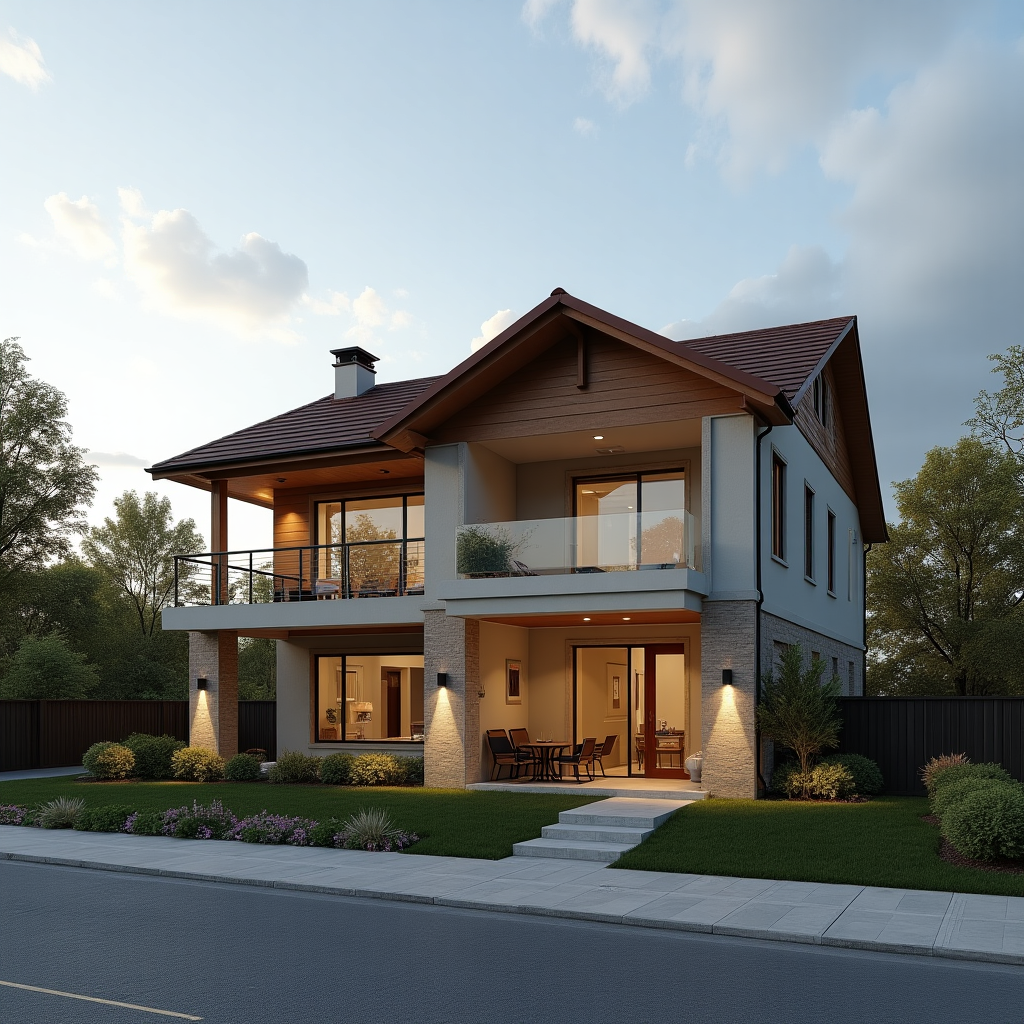CALL US +386 41 286 883
Promoting Property Value through Legalization and Building Compliance in Slovenia
The value of a property in Slovenia is inextricably linked to its legal status and compliance with building regulations. While aesthetic appeal and location play significant roles, the underlying legality of a structure is paramount. Non-compliance with building permits and spatial planning laws can lead to severe financial penalties, legal complications, and a substantial depreciation of a property’s market value. Conversely, ensuring full compliance and undertaking necessary legalization processes are vital investments that safeguard and enhance a property’s worth.
Building Inspections and Compliance
Key aspects of compliance and permits in Slovenia:
- Building Permit (Gradbeno dovoljenje): This is the essential document required to start construction, reconstruction, removal, or change of use of a building. It ensures that the construction aligns with spatial plans and building regulations. Obtaining it involves steps like checking land admissibility, considering protected areas, securing building rights, and preparing project documentation by authorized professionals.
- Occupancy Permit (Uporabno dovoljenje): For buildings that require a building permit (except for certain simple structures), an occupancy permit is mandatory before the building can be legally used. This permit confirms that the building is safe, compliant with regulations, and registered in the building cadastre and land register. Without it, a property legally doesn’t exist as a lawful structure, making sales, leases, or obtaining mortgages difficult or impossible.
- The process for obtaining an occupancy permit depends on the building type. Complex buildings typically require a technical inspection, while less complex ones may only need documentation and statements from experts.
- For single-family houses, an occupancy permit can be obtained without proof of structural reliability if the supervisor and control manager confirm compliance.
- Consequences of Non-Compliance:
- Fines and Prohibition of Use: The Construction Inspectorate can impose penalties, including fines and orders to cease using the building.
- Demolition Orders: In extreme cases of unauthorized construction, authorities may even order the removal of the structure.
- Lack of Legal Recognition: Without an occupancy permit, the building cannot be registered in official records (like the land register and building cadastre), making legal transactions (sale, mortgage) very challenging. An official house number also cannot be assigned, affecting address registration and connections to public infrastructure.
- Reduced Property Value: Non-compliance and the lack of proper permits significantly deter potential buyers and lenders, leading to a diminished property value.

Options for Legalization (Regularization)
Slovenia has procedures for legalizing unauthorized buildings, though the process can be complex and depends on when the building was constructed and the extent of the non-compliance. The Construction Act (GZ-1) regulates these procedures.
General steps for legalizing unregistered buildings:
- Verification of Land Compliance: Ensure the plot allows construction according to urban planning regulations.
- Preparation of Technical Documentation: This is a crucial step and often involves:
- Application for a building permit (if not obtained previously).
- Project of executed works (PID – Projekt izvedenih del), especially if there are significant deviations from an original project.
- Project documentation (architectural plans, structural calculations, engineering system diagrams, etc.).
- Documents proving the reliability of the object (DZO – Dokazilo o zanesljivosti objekta).
- Proof of land ownership or right to build.
- Approvals and permits from relevant authorities (utility services, fire inspection, etc.).
- Environmental impact report (if required).
- Proof of payment of administrative fees.
- Submission of Application for Occupancy Permit: This is submitted to the competent administrative unit.
- Verification and Review: The administrative unit reviews the documentation and may inspect the building. Deficiencies must be rectified.
- Obtaining an Occupancy Permit: If all conditions are met, the permit is issued.
- Registration in Official Records: The final step is to enter the building information into the Land Register and other real estate registers.
Specific legalization pathways and considerations:
- Buildings Constructed Before 1995 (New Legislation): A significant change under recent drafts of the Construction Act is the automatic legalization of buildings constructed before January 1, 1995. Previously, this presumption only applied to buildings built before 1968. This extension aims to simplify documentation processes for many property owners.
- “Long-Standing Structures” (before January 1, 2005): For buildings erected without a building permit before January 1, 2005, it may be possible to obtain a “permit for a long-standing structure,” which essentially serves as an occupancy permit. This is generally possible if the building has remained substantially unchanged in size and purpose since that date.
- Note: As of late 2023, the enforcement of Article 146 of the GZ-1 (which facilitated the legalization of such structures) was suspended, pending a review by the Constitutional Court. It’s important to check the current status of this article.
- Minor Deviations: The law allows for permissible minor deviations during construction (e.g., a building shifted up to 1 meter from the permit, provided it doesn’t infringe on neighbors’ rights).
- Digitalization: The upcoming “eGraditev” system (expected January 2026) aims to further simplify and accelerate construction and permitting procedures through a digital platform.
Promoting Property Value through Legalization and Compliance
Compliance with building permits and the successful legalization of any unauthorized construction directly and significantly increase property value by:
- Ensuring Legal Standing: A fully legal property with all necessary permits (building permit and occupancy permit) can be freely bought, sold, mortgaged, and inherited without complications. This eliminates a major risk factor for potential buyers.
- Facilitating Transactions: Notaries, banks, and other institutions require proper documentation, including occupancy permits, for legal and financial transactions. A compliant property simplifies the sale process, enables buyers to secure mortgages, and makes any future dealings smoother.
- Avoiding Penalties and Demolition: Legalization removes the threat of fines, prohibitions of use, or even demolition orders from the Construction Inspectorate, protecting the investment and future enjoyment of the property.
- Access to Services and Subsidies: A legally registered building can obtain an official house number, connect to public infrastructure (water, electricity, sewerage), and may become eligible for various subsidies (e.g., from the Eco Fund for energy efficiency improvements).
- Increased Buyer Confidence: Buyers are more willing to pay a premium for a property that is fully compliant and free of legal encumbrances. This transparency and certainty significantly boost marketability.
- Accurate Valuation: Professional property appraisals (often required by banks for mortgages) thoroughly review documentation, including building permits. A non-compliant building will likely receive a lower appraisal, whereas a fully legal one will be valued more accurately based on its true market potential.
- Future Development Potential: A property with proper documentation is better positioned for future renovations, extensions, or changes of use, as any new permits will build upon an already legal foundation.
In conclusion, investing in building inspections for compliance and undertaking the necessary legalization processes for any unauthorized constructions are not merely bureaucratic hurdles but essential strategic steps to protect and enhance the value of a property in Slovenia. It ensures legal certainty, facilitates market transactions, and prevents costly future problems.


